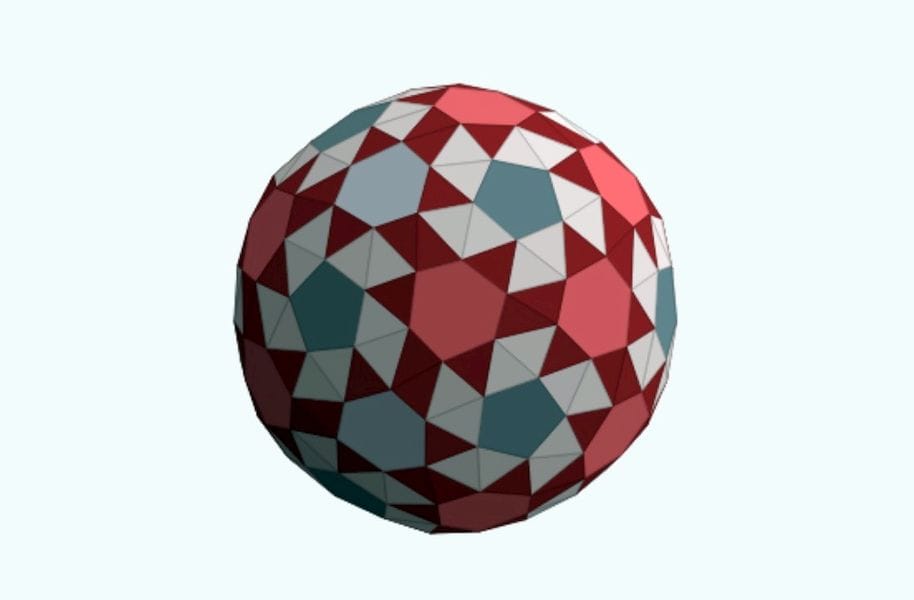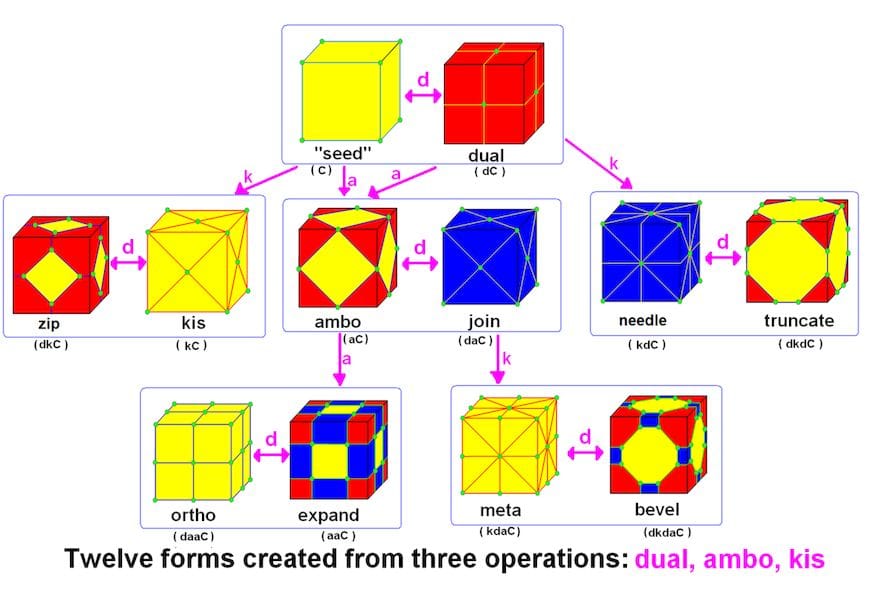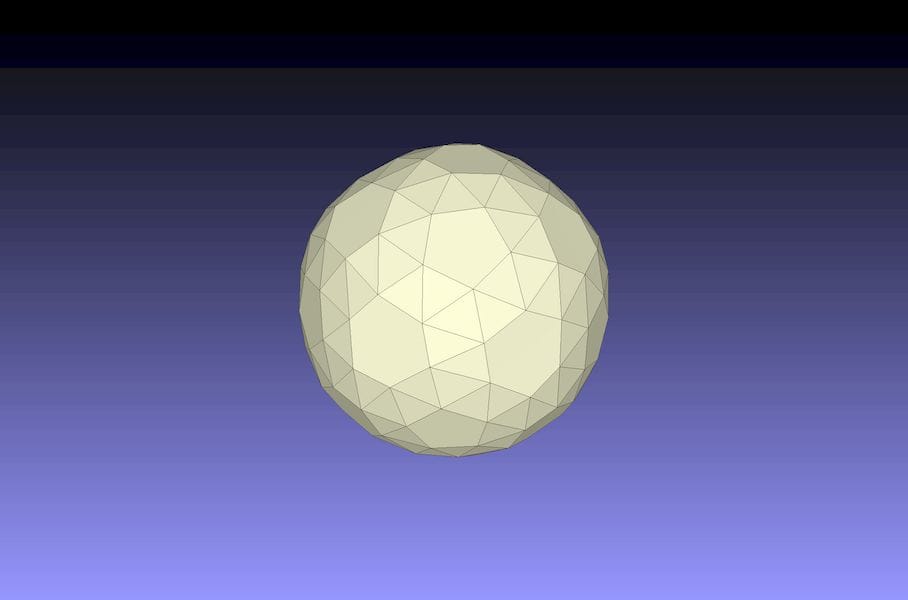
Need a polyhedron? Try PolyHédronisme.
This open source project by Anselm Levskaya is a single web page service that allows the creation of arbitrary polyhedron 3D models generated from a formula.
This service is different from the “Polyhedron Navigator” software we described last year.
The formula, or “Recipe” as Levskaya refers to it, is a set of parameters that apply a series of polyhedron operations on a base model. The successive operations can, if expertly defined, result in a variety of highly complex polyhedrons.
Wait, what’s a polyhedron again? According to Wikipedia a polyhedron is:
A solid in three dimensions with flat polygonal faces, straight edges and sharp corners or vertices.
A cube or pyramid would be simple examples of polyhedrons, but as you can imagine, that definition could include an infinite variety of highly complex shapes as you increase the number of geometries.
If you think about it, any STL 3D model is in fact a polyhedron as it is “A solid in three dimensions with flat polygonal faces, straight edges and sharp corners or vertices.” Generating a 3D polyhedron of your cat might be a bit much to ask, however.
Back to PolyHédronisme. It’s based on something called “Conway polyhedron notation”, which is a method of performing standard geometrical operations on polyhedra. These “Conway operators” are what seems to be implemented in PolyHédronisme.

The “recipes” used by PolyHédronisme appear to be analogous to Conway operators and are specified in a sequence like this: [operator] [operator] [operator] . . . [Base object], where computation moves from right to left.
Using PolyHédronisme is straightforward, but not obvious: to make a new recipe, you simply edit the URL at the top of your web browser. By loading that URL, the service executes your recipe and presents the generated polyhedron.
However, there are many combinations that seem to be invalid and do not generate a polyhedron. Why is this? Wikipedia explains:
In general, it is difficult to predict the resulting appearance of the composite of two or more operations from a given seed polyhedron.
However, if you are able to generate a proper polyhedron using your own recipe, it’s then quite easy to download a .OBJ file of that polyhedron, which, when converted to .STL by a utility like Meshlab, can be 3D printed.

PolyHédronisme also permits specifying colors for the faces, which creates a color 3D model. The system allows downloading of a .VRML format 3D model, which would include the color textures and thus be able to be 3D printed on suitable color 3D printers.
It takes some time and iterations with this service to obtain useful polyhedrons, but for your project it may be time well spent.
Via PolyHédronisme

